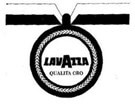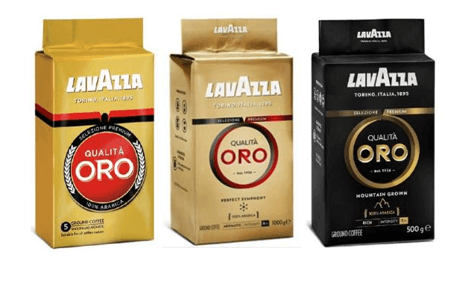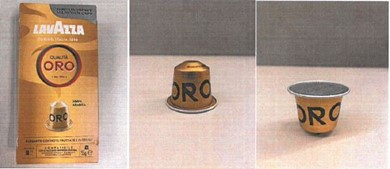
All that glitters is not gold – ‘ORO’ trade marks found to be invalid
On 20 October 2023, Yates J of the Federal Court of Australia delivered judgment in the long-running dispute in Cantarella Bros Pty Ltd v Lavazza Australia Pty Ltd (No 3) [2023] FCA 1258. His Honour invalidated two trade marks, ‘ORO’, on the basis that the registered holder was not the first person to use the marks in Australia in respect of the relevant goods and therefore was not the owner.
Background
Cantarella Bros Pty Ltd (Cantarella) was the owner of two registered trade marks (Canterella Trade Marks), both for ‘ORO’ (the Italian word for ‘gold’) in class 30 for “coffee; beverages made with a base of coffee, espresso; ready-to-drink coffee; coffee based beverages” (ORO Word Mark). Initially founded by two brothers in Sydney in 1947 as an importer of Italian food and beverages, Cantarella evolved to also distribute and sell coffee under the Vittoria Coffee brand. Canterella first used the ORO Word Mark in relation to coffee on 20 August 1996.
Lavazza Australia Pty Ltd and Lavazza Australia OCS Pty Ltd (together Lavazza) is a globally recognised Italian coffee brand originating in Turin in 1895. Lavazza coffee has been imported into Australia since about 1974. During this time, the range of Lavazza products has included its coffee blend sold under the name ‘LAVAZZA QUALITÀ ORO’. In connection with this product, Lavazza’s parent company owns the following registered device mark in Australia:

(Lavazza Device Mark)
Early versions of the packaging for the LAVAZZA QUALITÀ ORO product featured the Lavazza Device Mark. From at least 2010, the packaging underwent a series of changes including the removal of the word “Lavazza” from the central device and the depiction of the word “oro” in a larger font size than the word “qualità”, examples of which are pictured below:


(Lavazza Packaging)
Cantarella alleged that the Lavazza Packaging infringed the Canterella Trade Marks pursuant to section 120(1) of the Trade Marks Act 1995 (Cth).
Lavazza disputed the allegations on the following grounds:
- it had not infringed the Canterella Trade Marks because it had not used the word “oro” as a trade mark (and even if it had, it was entitled to a number of defences); and
- the Canterella Trade Marks were not validly registered because:the
- ORO Word Mark is not inherently adapted to distinguish Cantarella’s goods from the goods of other traders; and/or
- Canterella is not the owner in Australia of the ORO Word Mark in respect of the relevant goods.
Lavazza successfully established that the Canterella Trade Marks were invalid because Canterella was not the first person to use the marks in Australia in respect of the relevant goods.
Did Lavazza use the word “oro” as a trade mark?
Yates J said yes.
The question is whether the word was used, or intended to be used, as a sign to distinguish the goods dealt with by one trader from goods dealt by other traders. In other words, a word will be used as a trade mark if it has been used as a “badge of origin” to indicate a connection between the goods and the trader.
Here, having regard to various design features of the Lavazza Packaging (e.g. larger font size, shadowed and bolded text, contrasting background), “oro” independently functioned as a trade mark alongside “Lavazza”.
Was “oro” inherently adapted to distinguish Canterella’s goods from the goods of other traders?
Yates J also said yes.
Yates J accepted that many Australians (through their knowledge of Italian or another Romance language) might understand
“oro” to mean “gold” in English. However, His Honour was not satisfied that the word “oro” had an “ordinary signification”, and that the Australian public at large would understand “oro” to be a laudatory reference to “gold” or “premium quality”.
This conclusion is in line with the High Court decision in Cantarella Bros Pty Limited v Modena Trading Pty Limited [2014] HCA 48 (Modena Decision).
Was Canterella the owner of the ORO Word Mark in Australia?
Yates J said no.
Ownership of a trade mark can be acquired by the author of the mark, that is, the person from whom the mark originates or who is the first to adopt the mark for use as a trade mark.
Accordingly the question was whether another person had used the word “oro” as a trade mark for coffee before Canterella used it on 20 August 1996. Lavazza was successful in establishing that another person, namely Caffè Molinari, had indeed done so when it had first shipped its ‘CAFFÈ MOLINARI ORO’ coffee to Australia on 18 September 1995.
Interestingly, it was the local distributor of Caffè Molinari who was unsuccessful in the Modena Decision which concerned the same ORO Work Mark.
Key takeaways
The Federal Court’s decision serves as a reminder to all brand owners of the importance of being able to establish ownership prior to alleging trade mark infringement. Failure to do so could lead to the trade mark being invalidated.








